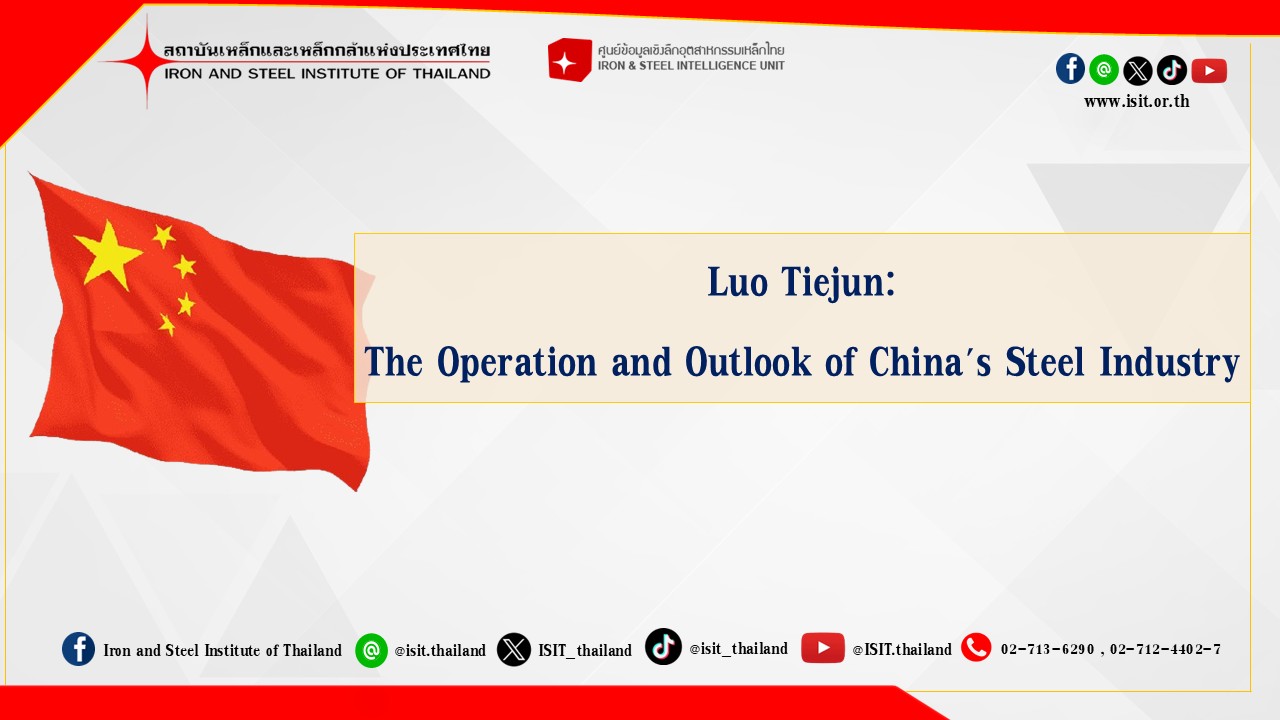On April 24-25, 2025, the 21st Steel Development Strategy Conference organized by SteelHome website and co-organized by Youfa Group, Zhengda Pipe Group, Magang (Group) Holding Co., Ltd., and Ouyeel, with Pangu Cloud Chain, Henan Tianyuan, and GTX Cloud Commerce as joint organizers and Henan Yutie as a supporting organizer, was grandly held in Shanghai.
More than 700 guests from over 500 entities, including 113 steel mills, 86 raw material enterprises, as well as industry chain companies, related institutions, and media outlets from home and abroad, participated in this conference.
At 8:30 a.m. on April 25, the keynote session of this conference officially commenced at the Shanghai International Convention Center. Mr. Luo Tiejun, Member of the Standing Committee of the CPC Committee and Vice Chairman of the China Iron and Steel Association (CISA), delivered a report titled "The Operation and Outlook of China's Steel Industry."
Key Points of the Speech:
- Steel Production Has Peaked, with Varied Trends Across Products: Overall steel production has reached its peak, but the peaking patterns differ by product category. From 2020 to 2024, the combined output of rebar and wire rod decreased by approximately 100 million tonnes, while production of hot-rolled coil increased by 95 million tonnes, and electrical steel output rose by 5.7 million tonnes.
- Downstream Demand Trends: The real estate sector has passed its development peak, and infrastructure construction is gradually slowing. In contrast, manufacturing has not yet reached its peak. Overall, steel demand in China has shown a declining trend. However, steel consumption is expected to remain within a plateau range for a relatively long period. It is projected that China's crude steel output will range between 800 and 900 million tonnes by 2035, and stabilize at around 800 million tonnes after 2050. China will remain the world's largest domestic steel market for the long term.
- Overall Approach to Capacity Governance: The Association advocates for strictly controlling new capacity, optimizing existing capacity, promoting mergers and acquisitions, and facilitating orderly capacity exit. It calls for closing off channels for new capacity additions, prohibiting capacity transactions, and encouraging internal capacity reallocation within reorganized enterprises.
- Adhering to a Sound Export Strategy: Under the premise of meeting domestic demand, maintaining a reasonable volume of steel exports is beneficial for keeping pace with global advanced manufacturing standards while serving international market needs. Under current conditions, the export strategy should emphasize "promoting high-end products, stabilizing markets along the Belt and Road, and strengthening regulatory oversight."
Source : Steelhome
